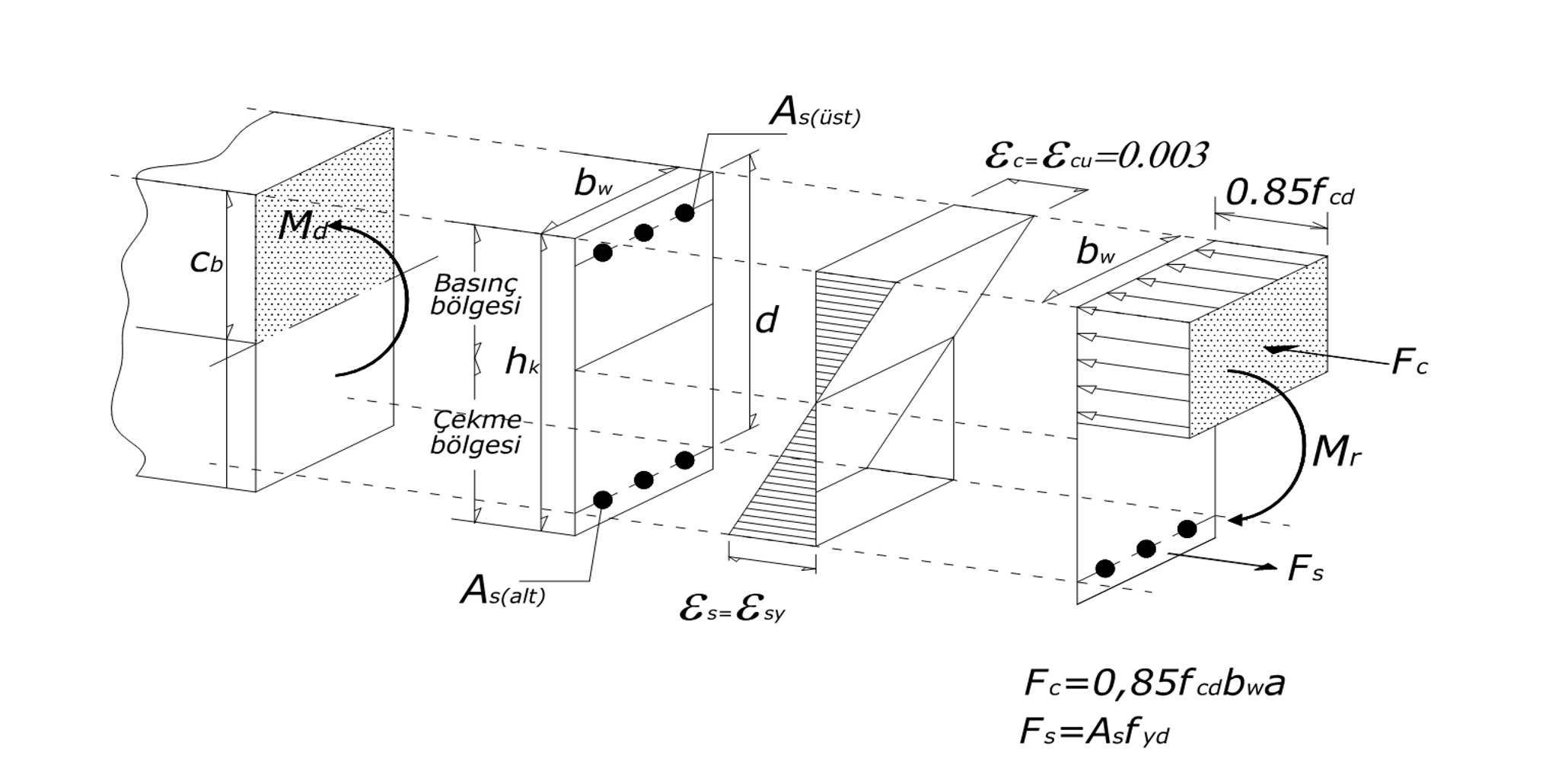TS 500 - Balanced Reinforcement Ratio Condition
Balanced reinforcement ratio control given in TS 500 Equation 7.4 is done automatically.
ICONS
A s = Tensile reinforcement cross section area
A ' s = Compressive reinforcement cross section area
b w = Beam body width
d = Beam useful height
ρ = Tensile reinforcement ratioat beam
ρ b = Balanced reinforcement ratio inbeam
ρ' = Compressive reinforcement ratio inbeam
ρ max = in beam maximum reinforcement ratio
The tensile reinforcement ratio ρ and compression reinforcement ratio ρ 'in beams are found by the following equations.

In these relations, A s is the tensile reinforcement cross-sectional area, A ' s compression reinforcement cross-sectional area, b w beam body width and d beam useful height.
According to Article 7.3 of TS 500 , the difference in tension and compression reinforcement ratios in beams cannot be more than 0.85 times the balanced reinforcement ratio ( TS 500 Equation 7.4 ).

In this relation, ρ max is the maximum reinforcement ratio in the beam, ρ b is the balanced reinforcement ratio.
Balanced reinforcement ratio is the ratio of reinforcement that ensures that the tensile reinforcement flows and the concrete in the outermost compression fiber crushes simultaneously when a reinforced concrete beam under bending effect reaches its bearing strength. The balanced reinforcement ratio is the upper limit of the ductile fracture reinforcement ratio.
The following image shows the stress and strain conditions that occur when a balanced reinforcement ratio of a reinforced concrete beam is defined. As can be seen, when the tensile reinforcement reaches the yield stress value f sy and the yield strain value ε sy , the crush pressure stress of concrete reaches 0.85f cd and the crushing pressure unit deformation of concrete reaches ε cu .

TS 500 Equation 7.4 control is done automatically for the left end, span and right end, taking into account whether the tension reinforcement in the beams is lower or upper reinforcement. An example of the Balanced Reinforcement Ratio Check report is shown in the image below.

Next Topic
